Big Bag
Container for flexible intermediate bulk
A flexible intermediate bulk container (FIBC), also known as a jumbo, bulk bag, giant sack, huge bag, or tonne bag, is a type of industrial container used for storing and transporting dry, flowable goods including plastic granules, fertilizer, and sand.
FIBCs are typically made of thick, tightly woven strands of oriented polypropylene that are coated or uncoated and range in diameter from 45 to 48 inches (114 to 122 cm) to 100 to 200 cm in height (39 to 79 inches). Its typical storage capacity is roughly 1,000 kg or 2,200 lb, but larger units have a higher capacity. It will only weigh 5-7 kg for a FIBC to convey one metric ton (0.98 long tons; 1.1 short tons) of material (2.3–3.2 kg).
It can be lifted from the loops or transported and loaded on pallets. There are one, two, or four lifting loops in bags. The single loop bag is appropriate for one man operation because only one person is required to attach the loops to the loader hook. Cutting it open or using an unique bottom hole, such as a discharge spout—of which there are several options—makes emptying simple.
History
It is uncertain when or where FIBCs were invented, however it is known that they have been utilized for a variety of packaging needs since the 1940s. These PVC rubber-made prototypes of the FIBC as we know it today were employed primarily within the rubber sector to carry carbon black, which was used as a reinforcing material in a variety of rubber products.
By the 1960s, when polypropylene was developed and weaving technology advanced, the bulk bags as we know them today were created. A wide range of oil and chemical firms quickly accepted them for the storage and transportation of powdered and granular goods.
The FIBC really came into its own in the middle of the 1970s oil crisis, when it transported massive amounts of cement from all across Europe to the Middle East for the quick growth of the oil-producing nations. When the massive building operation was at its height, upwards of 50,000 metric tons (49,000 long tons; 55,000 short tons) of cement were being transported out every week.
The contemporary FIBC handles, stores, and moves a variety of products, from cereals to powdered chemicals and flour to animal feeds, totaling about 250,000,000 metric tons (246,000,000 long tons; 276,000,000 short tons) annually. With a capacity of up to 3 m3 (3.9 cu yd) and a load capability of 0.49 to 1.97 long tons (0.55 to 2.20 short tons), FIBCs are perfect for almost any free-flowing granule, powder, pellet, or flake. They are also very cost-effective and easily recyclable. Additionally, FIBCs for holding and filtering fluid products are being developed.
Flexible intermediate bulk container types
Bag construction styles:
The lowest level of the FIBC is the circular bag, which is woven as a tube. When loaded, it will lose its shape and sit down, with the midsection bulging out. When loaded, it will resemble a tomato since the product will stretch the fabric under the pressure of the laden product. It would often have lifting loops at the corners.
A U-panel bag is an improvement over a circular bag since the shape of the bag is created by sewing together two pieces of fabric that resemble a U. Compared to the circular form, it will maintain its square shape considerably better.
Other than a baffle bag, the four-panel bag is the best at maintaining squareness. The sides are made up of four pieces of cloth, and the bottom is made up of one piece of fabric. These are all connected by sewing, which better maintains the bag’s cube shape and prevents it from expanding.
When the bag is loaded, the baffle type will retain your product’s cube shape the best. To act as a pocket to fill each corner, extra baffles are sewed down each corner. For the product to gather around the baffles and pockets, additional pockets have been sewed on each side. These are ideal if you have a product with a tiny diameter that can pass through the baffles without becoming stuck, like soybeans. As they will form a neat square cube, these bulk bags will be simpler to stack.
Specialty bags include those that are:
- Pharmaceutical (similar to food grade certifications);
- UN certified (must pass numerous tests to ensure it can withstand stress while preventing spillage of hazardous material);
- Food Grade (must be produced in a clean room environment that is BRC or FDA approved);
- Ventilated FIBC (used for potatoes and other fruits and vegetables to allow the product to breathe).
Various lift loop arrangements: one loop, two lift loops, and four lift loops
Standard lift loops and cross corner lift loops are two examples of lift loops.
Bags for FIBCs with Liners
- To prevent the woven FIBC from sifting, products that are dusty or dangerous must have a polypropylene lining inside the FIBC.
- Polypropylene, Polyethylene, Nylon, or a metal (Foil) liner can be used to make liners.
Electrical Characteristics
- Type-A products lack particular electrostatic safety features.
- Type B – Propagating brush discharges cannot be produced by Type B bags. This FIBC’s wall displays a breakdown voltage of no more than 4 kilovolts.
- Conductive FIBC of Type C. made of cloth that conducts electricity and is intended to ground electrostatic charges. Conductive tape or threads are utilized in common fabrics.
- Type D FIBCs, often known as anti-static FIBCs, are those that feature static dissipative or anti-static capabilities without the need for grounding.
Describe the FIBC
A bulk bag, also known as a FIBC, is essentially a bag formed of woven polypropylene thread strands. Similar to how cotton apparel is formed, the strands are produced and then weaved together to create the bag fabric. The distinction is that these bags can support a lot of weight. They often ship with between 2200 and 3000 lbs of different materials. However, these bags can be made to store 12,000 pounds of material when the proper handling equipment is in place.
What kinds of goods or materials can be kept in bulk bags or FIBCs?
Several industries, including agriculture, aggregate, cereals, fertilizer, polymers, chemicals, powders, mining, etc., already use bulk bags. Food, prescription drugs, agricultural products, and chemicals are the industries that use bags the most. Although it is not always practical, all of these markets would prefer to export in large quantities. Some clients need a lower quantity of material since they are unable to transport large vehicles. Bulk bags are ideal because, for instance, a farmer requiring only 2,000 lbs of seeds or fertilizer would not accept an entire truckload. Bulk bags are used to deliver goods to less industrialized nations when transporting goods abroad in shipping containers. The product must be packaged in either small bags or bulk bags, allowing for handling even with rudimentary infrastructure (dirt roads, poor equipment).
Why aren’t bulk bags or FIBCs used more frequently?
Skepticism or false beliefs about the product are a couple of the barriers preventing FIBCs from being employed in more industries. When it comes to skepticism, many people don’t believe a 5 lb plastic bag can safely store 3,000 lb unless they work in a field where it’s done regularly. Because many people do not understand how to utilize them and think a large infrastructure is required to load or unload the bags, misconceptions can arise. Some sectors find it simpler to relate to bulk boxes because they are familiar with how a box functions. Additionally, several businesses have already made substantial investments in equipment for box unloading, like box tippers. Stacking may also affect the choice. Boxes can be stacked three high without much thought because many businesses stack on the floor, while bulk bags require more thought and an understanding of the goods.
What Makes Bulk Bags Useful?
Convenient To Store
A typical sized pallet holds about 200 bulk bags, which have a volume equivalent to that of a bulk box. Due to this, 500 bulk boxes and 7,000 bags typically occupy the same space. This may be a significant benefit for businesses with limited space.
Simpler To Obtain
Procurement managers must continuously purchase boxes to meet demand for fresh boxes. With old boxes, which many companies use, these are occasionally not available, necessitating the need to hunt with numerous providers (monthly). The number of boxes available for purchase on the secondary market will decrease if industrial production declines. With bags, procurement might occur considerably less frequently because one load of bags will take up the same amount of area as one truckload of boxes.
Simpler To Control
One female worker could easily handle them because a bulk bag weighs about 4-6 pounds on average. On the other hand, an octagon bulk box weighs between 30 and 45 pounds and requires two people to prepare for loading.
Spends Less
Used bulk bags can be acquired for about $4–$6 whereas new bulk bags range in price from $9–$12. Purchase prices for brand-new bulk boxes range from $25 to $35, while those for secondhand boxes range from $12 to 16 depending on the market. Companies would save a lot of money if they used thousands of these every year.
Capacity To Support Heavier Loads
While a bulk bag can be constructed to contain up to 4,000 lbs. with the same footprint as a bulk box, a 4-5 wall bulk box can only hold about 1,800–2,000 lbs. You have the same footprint but twice as much weight as before.
By Whom Should Bulk Bags Be Used?
Suppliers of Landscape Materials
Bulk bags of mulch, rocks, stone, sand, mud, and other materials are only delivered by a small number of businesses. A lot more businesses ought to use these bags because they may easily transport a load of five or more materials to the same job site in different bags, keeping each item distinct. Every bag might also be sent directly to its intended use. Since most businesses employ bulk trucks, they either have to send many trucks or mix commodities during shipping. They’ll also dump data in a single location, where it will need to be relocated manually or via another method to where it is needed.
Construction
Bags may be useful to construction businesses since they could put them right where the material is being utilized or disposed. removing the need for repeated handling of the materials, which requires a lot more work. As an illustration, consider pipe fittings, concrete ties, rebar, mortar, and bricks. Additionally, if items are being thrown away as part of a remodeling project, the bags may be loaded near to the rehab area, transported to a dumpster, and then unloaded again. Bulk bags might help you save a lot of time.
Recycling
These bags could offer a big advantage over bulk boxes when recycling metal, plastic, or clothes. The bags can easily be piled two high on a shipping container and fitted to take up all available space if you are sending these materials abroad. Additionally, you may do away with the necessity for pricey heat-treated pallets. Pallets must be used while moving boxes, which raises the price.
Nonprofit Organizations
Clothing, books, toys, shoes, and a wide variety of other items are donated to charitable organizations. All of this material needs to be managed so that it may be shipped abroad or resold in a retail setting. To fit the various types of materials to be handled, bags might be created in a variety of heights and widths.
As previously mentioned, there are numerous benefits to using bulk bags, thus certain businesses or industries should consider what is necessary to make the changeover. They won’t be dissatisfied.
THE MOST USED PACKAGING FOR BULK PRODUCTS IS THE BIG BAG
Big bags, sometimes referred to as FIBCs (Flexible Intermediate Bulk Containers), are one of the most popular ways to package, store, and transport a variety of bulk goods.
Additionally, businesses across a wide range of industries use giant bags for a variety of uses. For instance, they are utilized for waste collection in the construction industry and for the transportation of all kinds of nuts and grains in the agri-food industry.
It is a kind of flexible packaging in the shape of a large bag constructed of various polypropylene yarn-based woven textiles.
Kinds of Large Bags
The characteristics of the item or substance being transported are one of the most crucial aspects to consider while selecting the best kind of huge bag. The most often used standard model is typically 100 cm high and 90 cm x 90 cm at the base. It features four handles and is composed of white polypropylene raffia.
However, there are many other types of big bags available on the market as a consequence of mixing various dimensions, colors, materials, weight limits, and additional aspects that can be added to meet specific customer needs.For instance, you can decide whether the bottom (lower section of the big bag) is flat and closed or whether it has a discharge valve built into it to make it easier to empty the big bag’s contents. To secure the load within the big bag, you can choose to leave the mouth (top part of the bag) open, with a loading valve or with a closing sleeve and a knotter.
The big bag can also include a liner, which is a cover that is inserted within the big bag to shield the contents from air, moisture, and sunlight.
Benefits of using large bags
Big Bags are one of the most popular methods for packing and transporting bulk products due to their many benefits.
- Since it is a form of stackable packing, it takes up less room when being transported or stored. They can be folded when they are empty, and they take up very little space.
- They are environmentally friendly because they are recyclable and biodegradable.
- Extremely effective packaging: The vast majority of modern industrial machinery has been modified to fit these packages, saving time and money when filling and emptying large bags.
– Support loads of up to 2,000 kg
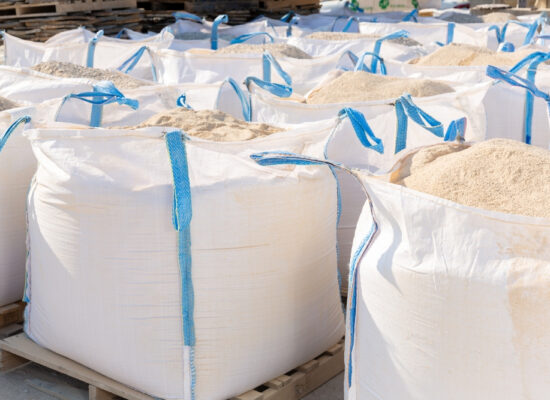
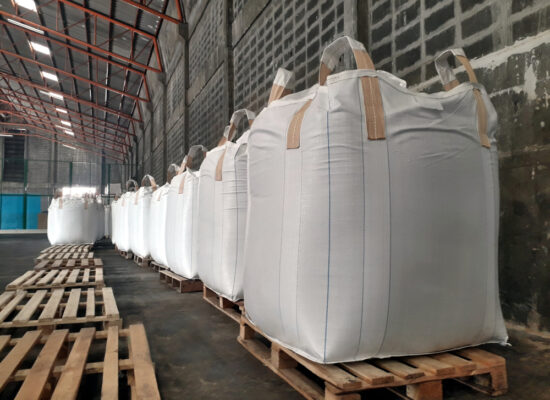
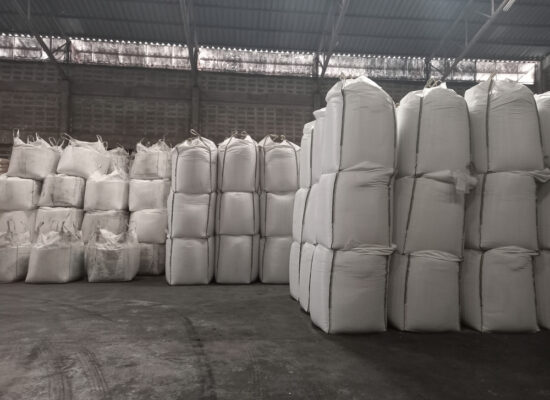
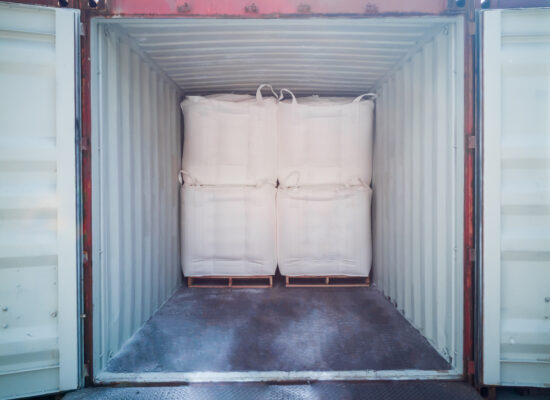
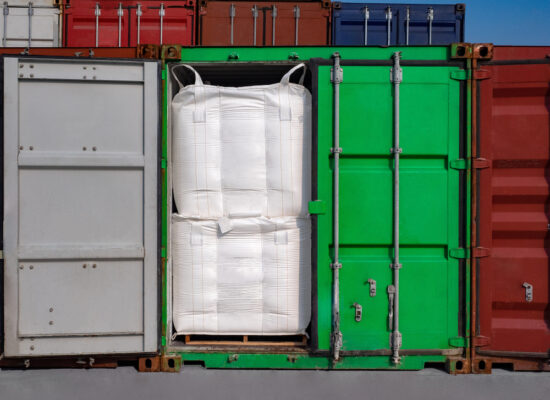
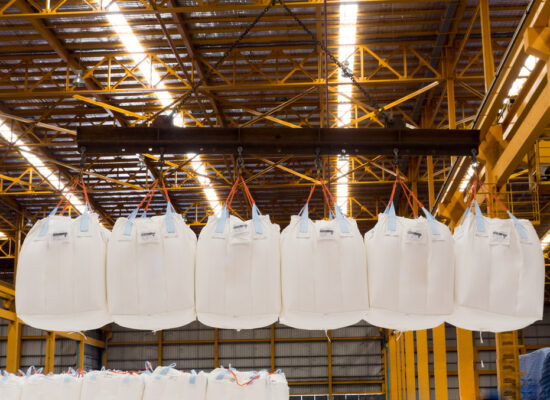
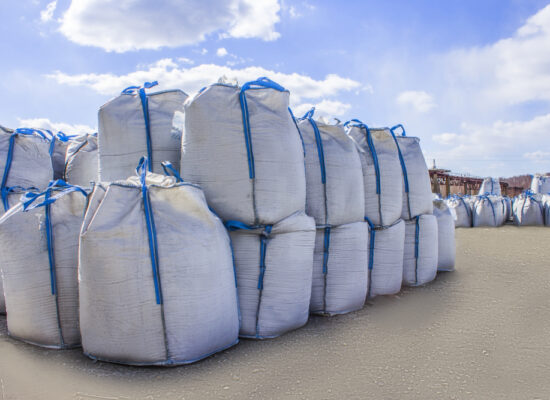
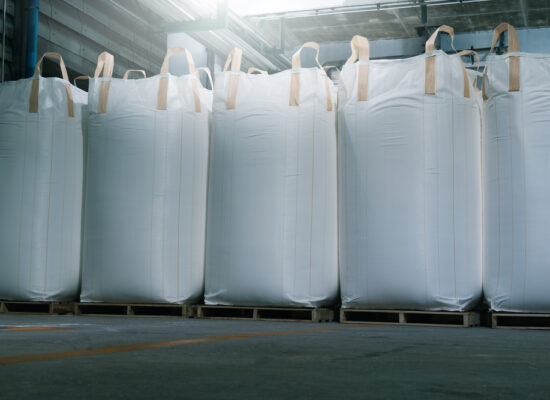
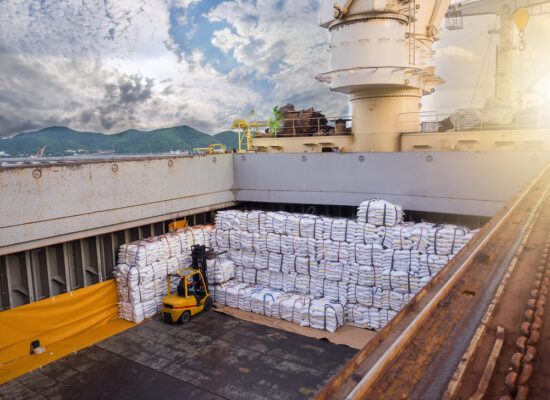
© Arbemu. All rights reserved